Student Projects (Proposed by Ingve Simonsen)
Below you will find a list of students projects proposed that we have currently available in our group.
they are suitable for both the ninth semester projects as well as master thesis projects. In particular
natural science students are welcomed.
My research focus, that is mainly theoretical and most often involves scientific computing,
you can get a good idea about from my research page.
It is therefore topics taken from these fields that will be the most relevant.
For each project, only a limited amount of information is given. It is not even intended to be complete,
but instead serve as an appetizer to the various topics. Hence, if you find any of them interesting, please
do not hesitate to come to see me for additional details. Moreover, the below list is not complete (and not
always fully updated), so it might in this be a good idea to inquire more in detail.
Interested in thesis work abroad/Industrial thesis?
I do have several collaborators abroad, both academic and industrial. Thesis in some of these groups, or as part of your thesis work at NTNU may be arranged. The most relevant academic groups are located in (Europe): France, Germany, Denmark, Spain and Poland; but also in the US, Canada, Mexico and Brazil. I also have contacts in the industry looking for (or being interested in hosting) thesis candidates. Those includes banking/finance (Copenhagen, Denmark) and material science/optics (Paris, France), as well as several national industries. If you are interested, please contact me for topics and additional information.Please keep in mind that if you plan to stay abroad for your thesis work, pre-planing is essential! Do not start the planing process too late. There are many issues that will have to be be sorted out, like host institution, founding, insurance etc.
Computational Electromagnetics (CEM) [several projects]
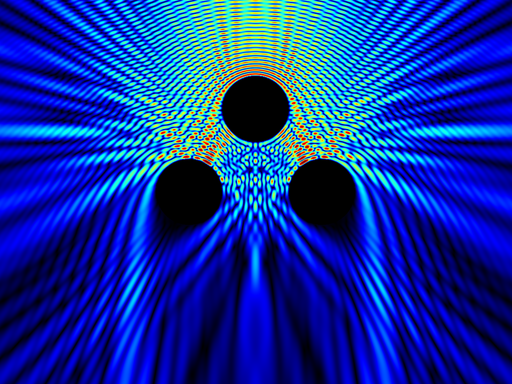 Computational Electromagnetics denotes a set of methods used to
describe (model) how light (the electromagnetic field) interacts with
physical objects and the environment. Such methods are used since
analytic solutions to the problem at hand are not know, and such
methods are extensively used in industry.
We offer several projects in this domain. Some of the projects are
devoted to using a pre-made software packages, others to code development
adapted to specific problems. Projects proposed by
industrial collaborators may be possible.
The aim of the projects are
two-fold: 1) to introduce the students to some of the available
CEM-techniques 2) to solve interesting, open scientific problems where
use of CEM-techniques are required. Suitable candidates should have
strong interest in the use of computers for scientific/engineering
applications.
Go here for additional information.
Computational Electromagnetics denotes a set of methods used to
describe (model) how light (the electromagnetic field) interacts with
physical objects and the environment. Such methods are used since
analytic solutions to the problem at hand are not know, and such
methods are extensively used in industry.
We offer several projects in this domain. Some of the projects are
devoted to using a pre-made software packages, others to code development
adapted to specific problems. Projects proposed by
industrial collaborators may be possible.
The aim of the projects are
two-fold: 1) to introduce the students to some of the available
CEM-techniques 2) to solve interesting, open scientific problems where
use of CEM-techniques are required. Suitable candidates should have
strong interest in the use of computers for scientific/engineering
applications.
Go here for additional information.
NanoPhotonics or Plamonsics [several projects]
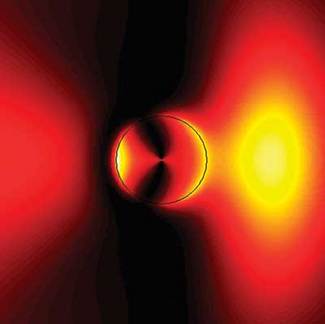 Nano plasmonics has recently become a hot topics due to its potential
applications in several fields of science. Plasmonics modes are
resonant modes that under certain conditions can be excited in small
(nano) metallic particles. At the resonance, the local electric field
close to the particles is enhanced. This property has recently
attracted some attentions as ways to e.g. increase the absorption in
solar cells, or to perform in situ characterization and monitoring of
the growth of such particles during deposition. This project is
dedicated to the study of theoretical/numerical properties of such
systems.
Go also here
and see the software package GranFilm
for additional information.
Nano plasmonics has recently become a hot topics due to its potential
applications in several fields of science. Plasmonics modes are
resonant modes that under certain conditions can be excited in small
(nano) metallic particles. At the resonance, the local electric field
close to the particles is enhanced. This property has recently
attracted some attentions as ways to e.g. increase the absorption in
solar cells, or to perform in situ characterization and monitoring of
the growth of such particles during deposition. This project is
dedicated to the study of theoretical/numerical properties of such
systems.
Go also here
and see the software package GranFilm
for additional information.
Scattering simulations using graphics cards
 Simulations are central in the analysis of X-ray scattering data, and
these simulations are often computationally intensive. Over the last
few years, it has been demonstrated that modern graphics cards can
speed up many numerical problems 10-100 times compared to normal CPUs
[Editors Choice, Science 327 (2010)]. The aim of this project is to
exploit the vast computational power of modern graphics cards to
tackle large simulation problems related to X-ray scattering. Relevant
problems include multiparameter fitting of highly non-linear models
for reflectivity and diffuse scattering (using genetic algorithms or
derivative-based approaches), statistical techniques ("bootstrap") for
uncertainty analysis, and model optimization based on weighted data
from disparate experimental techniques. The project is suitable for
candidates with an interest in physics and excellent programming
skills.
In collaboration with : Dag W. Breiby and Ragnvald Mathiesen,
Simulations are central in the analysis of X-ray scattering data, and
these simulations are often computationally intensive. Over the last
few years, it has been demonstrated that modern graphics cards can
speed up many numerical problems 10-100 times compared to normal CPUs
[Editors Choice, Science 327 (2010)]. The aim of this project is to
exploit the vast computational power of modern graphics cards to
tackle large simulation problems related to X-ray scattering. Relevant
problems include multiparameter fitting of highly non-linear models
for reflectivity and diffuse scattering (using genetic algorithms or
derivative-based approaches), statistical techniques ("bootstrap") for
uncertainty analysis, and model optimization based on weighted data
from disparate experimental techniques. The project is suitable for
candidates with an interest in physics and excellent programming
skills.
In collaboration with : Dag W. Breiby and Ragnvald Mathiesen,
Designer surfaces: Diffractive optical elements with well characterized optical properties
[Several projects]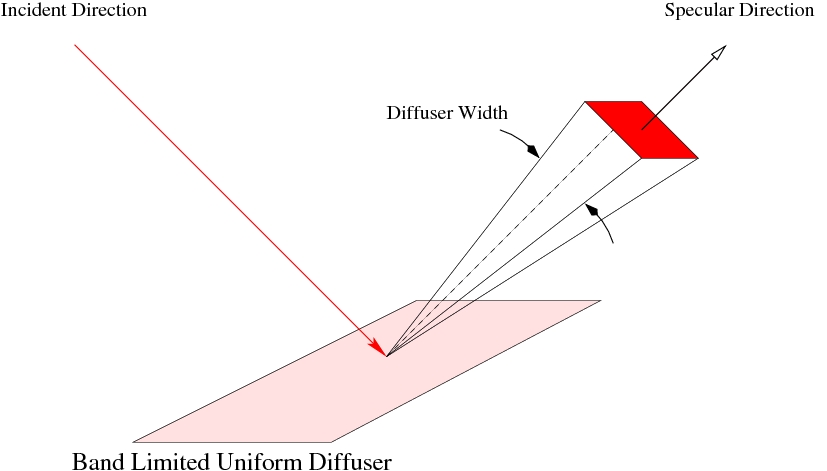 To be able to design diffractive (optical) elements with well defined
properties is a desired property in many applications, e.g. for flat
screen displays. However, such a task is not straight forwardly
achieved. Over the last years, theoretical advances has made it partly
possible to predict and engineer such elements towards desired optical
properties in a systematic and well-controlled fashion. This is
achieved by solving the inverse optical problem by a first
approximating the optical response due to a surface structuration and
to a solve this expression with respect to the desired optical
property resulting in the statistical properties of the surface. This
inversion could in principle also be performed numerically thereby
also including multiple scattering processes. This project will
further investigate this approach by "designing" new elements, and to
push the limit of its applicability. Part of this project will serve
as input to a larger EU project on Nano imprinting (NAPANIL), and it
may be arranged to spend some time during the thesis work in Paris,
France.
Go here for additional information.
To be able to design diffractive (optical) elements with well defined
properties is a desired property in many applications, e.g. for flat
screen displays. However, such a task is not straight forwardly
achieved. Over the last years, theoretical advances has made it partly
possible to predict and engineer such elements towards desired optical
properties in a systematic and well-controlled fashion. This is
achieved by solving the inverse optical problem by a first
approximating the optical response due to a surface structuration and
to a solve this expression with respect to the desired optical
property resulting in the statistical properties of the surface. This
inversion could in principle also be performed numerically thereby
also including multiple scattering processes. This project will
further investigate this approach by "designing" new elements, and to
push the limit of its applicability. Part of this project will serve
as input to a larger EU project on Nano imprinting (NAPANIL), and it
may be arranged to spend some time during the thesis work in Paris,
France.
Go here for additional information.
Wire Grid Polarizers
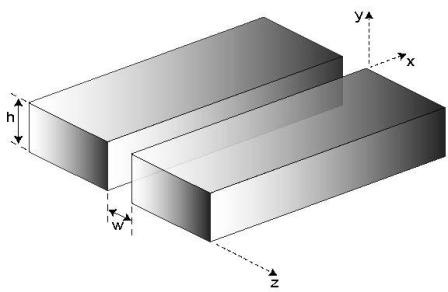 Optical polarizer are one of the major cost driving components of any
flat screen and projector equipment, and they are essential in order
to be able to form the image. Within this projects we will study one
such class of polarizors known as "wire grid polarizors". In essence,
they consist of a series of aligned metallic wires separated by a
sub-wavelength period. When the incident field is polarized parallel
to the direction of the grid, the system reflects most of the light,
just as for a continuous metal plate. On the other hand, if the
incident light is polarized perpendicular to the wires, most of the
light is let through. Hence, the device will act like a polarizer
where the transmitted light has the electric field directed
perpendicular to the direction of the wires. This project aims at a
theoretical/numerical study of the optical properties of such systems.
In particular, one hopes to explain some experimental data
obtained by (Saint-Gobain Research (Paris) by)
letting the incident light enter the system from the vacuum and
substrate side, for which the quality of the polarization is
different.
Optical polarizer are one of the major cost driving components of any
flat screen and projector equipment, and they are essential in order
to be able to form the image. Within this projects we will study one
such class of polarizors known as "wire grid polarizors". In essence,
they consist of a series of aligned metallic wires separated by a
sub-wavelength period. When the incident field is polarized parallel
to the direction of the grid, the system reflects most of the light,
just as for a continuous metal plate. On the other hand, if the
incident light is polarized perpendicular to the wires, most of the
light is let through. Hence, the device will act like a polarizer
where the transmitted light has the electric field directed
perpendicular to the direction of the wires. This project aims at a
theoretical/numerical study of the optical properties of such systems.
In particular, one hopes to explain some experimental data
obtained by (Saint-Gobain Research (Paris) by)
letting the incident light enter the system from the vacuum and
substrate side, for which the quality of the polarization is
different.
Surface Shape Resonances
Surface shape resonances are excitations with a finite lifetime, localized in the vicinity of an isolated defect on an otherwise planar surface. There exist a great deal of theoretical evidence of their existence, but so far they have not been experimentally observed. This project aims at theoretical and numerical studies such resonant excitations and under which favorable conditions they can be excited and hopefully experimentally observed.Diffractals: Wave-Scattering from fractal objects
Light being scattered from an irregular fractal intercase was termed diffractals by Sir. M. Berry. This project is dedicated to the study of computer simulations of a capillary wave interface with a focus on multiple scattering effects. Such interfaces are special types of long range correlated (fractal) surface that occur at the interface of e.g. liquid and air. It is due to the competition of surface tension of the liquid and the thermal fluctuations. This project aims at comparing rigorous computer simulations results to approximate analytically solutions obtained by scaling arguments. Moreover, one will try to identify under what conditions such simplified (single-scattering) solutions fail.Self-Affine Surfaces
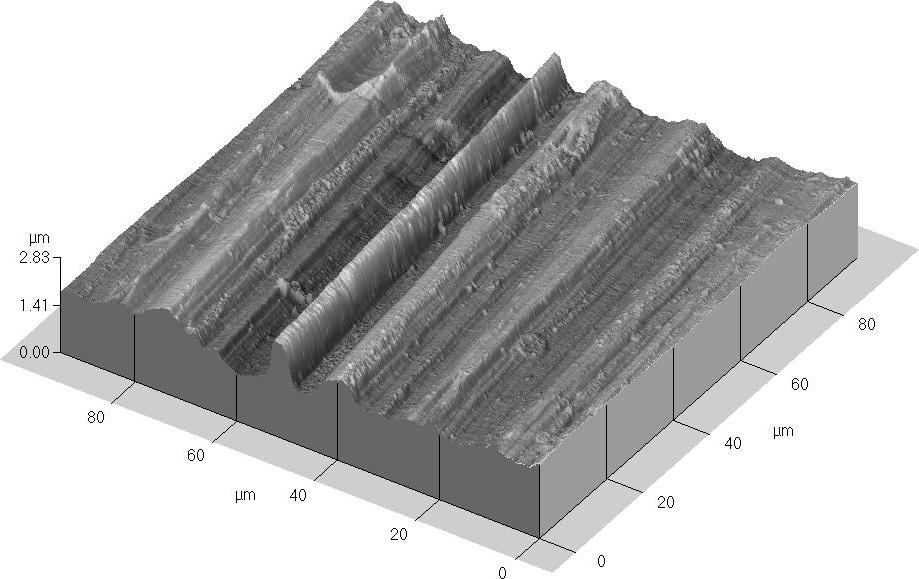 Self-affine surfaces are statistical structures that show a particular
type of scale invariance under rescaling. This invariance is
quantified by a so-called Hurst or roughness exponent. They are
ubiquitous in nature, and it is therefore of interest quantify (i.e.
measure) to study the implications of such statistical
properties. Several projects are available within this category. One
is aiming at developing robust methods for the measuring of
self-affine exponents in multiple-dimensions. Another one is related
to optics, where one will study the so-called intensity-intensity
correlation functions for the scattering from self-affine structures.
In a third (and more experimentally oriented) project, one will, together with Prof. Morten Kildemo (NTNU),
adapt an operational theta-2theta reflectometer/ellipsometer is to measure weak scattering
from Al self-affine surfaces. The proposal is that the student performs
the characterization and background theory in the project
work. The student is proposed to perform the theoretical modeling in the Master-work (main
supervisor Simonsen). This project is original research, and involves state of the art
understanding of such surfaces.
Go here for additional information.
Self-affine surfaces are statistical structures that show a particular
type of scale invariance under rescaling. This invariance is
quantified by a so-called Hurst or roughness exponent. They are
ubiquitous in nature, and it is therefore of interest quantify (i.e.
measure) to study the implications of such statistical
properties. Several projects are available within this category. One
is aiming at developing robust methods for the measuring of
self-affine exponents in multiple-dimensions. Another one is related
to optics, where one will study the so-called intensity-intensity
correlation functions for the scattering from self-affine structures.
In a third (and more experimentally oriented) project, one will, together with Prof. Morten Kildemo (NTNU),
adapt an operational theta-2theta reflectometer/ellipsometer is to measure weak scattering
from Al self-affine surfaces. The proposal is that the student performs
the characterization and background theory in the project
work. The student is proposed to perform the theoretical modeling in the Master-work (main
supervisor Simonsen). This project is original research, and involves state of the art
understanding of such surfaces.
Go here for additional information.
Application of Physics in New Domains : Econophysics/Sociophysics [several projects]
 Financial and economical systems do constitute stochastic processes
with complex and often unknown properties. Over the last two decades,
in particular, an increasing trend has been witnessed where methods of
physics and mathematics penetrating into these new domains. The
so-called "quants", the quantitative analyst of the financial
industry, play an ever increasing role. They more-or-less always are
formally trained in physics or mathematics. The use of physics methods
to economical problems has recently been termed "econophysics".
We can offer several projects on different topics within this exciting
new field. For details, interested students are encouraged to take
contact. Go here for additional information.
Moreover, here is the description of one concrete projects proposed in collaboration with J.V. Andersen in Nice.
Financial and economical systems do constitute stochastic processes
with complex and often unknown properties. Over the last two decades,
in particular, an increasing trend has been witnessed where methods of
physics and mathematics penetrating into these new domains. The
so-called "quants", the quantitative analyst of the financial
industry, play an ever increasing role. They more-or-less always are
formally trained in physics or mathematics. The use of physics methods
to economical problems has recently been termed "econophysics".
We can offer several projects on different topics within this exciting
new field. For details, interested students are encouraged to take
contact. Go here for additional information.
Moreover, here is the description of one concrete projects proposed in collaboration with J.V. Andersen in Nice.
Time-Series Analysis/Stochastic modeling [several projects]
 A time series is a sequence of observation points of a phenomenon
measured at successive times that typically are equidistantly spaced.
Time series are found in most branches of natural- and social-science,
engineering, and economics and fiance. Time series analysis is used to
denote the set of tools used to extract meaningful statistics and
other characteristics of the data. Hence it is very useful knowledge
with a brad appeal within numerous domains. The projects we currently
have available in this domain are related to time series analysis of
wind data and other environmental data. One of the projects will
combine time series analysis and stochastic modeling.
Collaboration : Kjeller Vindteknikk, SINTEF
A time series is a sequence of observation points of a phenomenon
measured at successive times that typically are equidistantly spaced.
Time series are found in most branches of natural- and social-science,
engineering, and economics and fiance. Time series analysis is used to
denote the set of tools used to extract meaningful statistics and
other characteristics of the data. Hence it is very useful knowledge
with a brad appeal within numerous domains. The projects we currently
have available in this domain are related to time series analysis of
wind data and other environmental data. One of the projects will
combine time series analysis and stochastic modeling.
Collaboration : Kjeller Vindteknikk, SINTEF
Complex Networks: Properties and physical implications [several projects]
 Complex networks, that is a collection of nodes and links, have
recently attracted a great deal of attention in the physics
community. The reason for this interest is that real-life empirical data have
become available, and the fact they often are not well-described by
simple graph theory (a branch of mathematical). Our aim is to study the
physical consequences on dynamical properties
due to an underlying complex geometry restricting flow etc.
Projects in this category can be related to epidemic and rumor
spreading and traffic flow on complex networks.
Go here for additional information.
Complex networks, that is a collection of nodes and links, have
recently attracted a great deal of attention in the physics
community. The reason for this interest is that real-life empirical data have
become available, and the fact they often are not well-described by
simple graph theory (a branch of mathematical). Our aim is to study the
physical consequences on dynamical properties
due to an underlying complex geometry restricting flow etc.
Projects in this category can be related to epidemic and rumor
spreading and traffic flow on complex networks.
Go here for additional information.
Joint projects
Polarimetric (Mueller matrix) Laser Light Scattering from rough surfaces, including nano-structured surfaces
A new optimal Mueller Matrix Laser light scattering instrument (to our knowledge the only one in the world) promises to supply new understanding to the fundamental scattering properties of disordered surfaces. The instrument consists of 4 stable Laser sources ranging from the NIR to UV. The instrument measures the entire Mueller matrix for all Laser wavelengths and in the full scattering geometry, and thus supplies additional information about the surfaces, through e.g. the observation of depolarization, diattenuation, and retardance as a function of incidence angle and scattering angle. The latter is possible since the instrument is also equipped with a complete goniometer, hence both in plane and out of plane scattering are observable.The student is also encouraged to participate in both improving the instrument features (e.g. weak signal detection accuracy, detector linearities), software improvement (Labview), i.e. the instrumentation details.
As a second part of the project/Master work, the student may choose to study the scattering surfaces qualitatively or move into rigorous vector based EM-modeling in order to interpret the measurements (main supervisor Simonsen).
Supervisor Team: M. Kildemo, F. Stabo-Eeg, M. Lindgren, I. S. Nerbø, I. Simonsen
Growth and dewetting of ultra-thin Ag films (External Industrial thesis)
It is generally desired that coatings stay attached to (wet) the substrate. In many cases it is not thermodynamically favourable to form an interface and dewetting is observed. However, when occurred in vacuum, thin film growth is rarely driven by thermodynamics and, in fact, deposition processes (evaporation, sputter-deposition etc.) are all carried out in far from equilibrium conditions.The subject of this project is defined by the wide use of thin Ag films as optically active coatings. Excellence in optics, however, is accompanied by weak interaction of Ag with other materials. This causes poor adhesion and dewetting of Ag films. The influence of deposition parameters (the substrate material, deposition rate, substrate temperature, parameters of sputter magnetron etc.) on structure and wetting properties of Ag films is not clear. In this project, the structure of Ag films will be studied by in-situ UV-reflectometry and ex-situ techniques, mainly by atomic force microscopy. The experimental part will be complemented by consideration of nucleation and growth theories. The work will be done at a research center Saint-Gobain Recherche situated at the outskirt of Paris.
Supervisor Team: Sergey Grachev (seregey.grachev@saint-gobain.com) and Elin Søndergård (elin.sondergard@saint-gobain.com)
System Biology (External academic thesis)
 Systems biology is a biology-based inter-disciplinary study field that
focuses on complex interactions in biological systems. "It is a birds
eye view on biology".
Several projects sutable for a physicist is available, like
protein-protein interaction networks.
The supervisor will be Eivind Almaas (Department of Biotechnology, NTNU)
Systems biology is a biology-based inter-disciplinary study field that
focuses on complex interactions in biological systems. "It is a birds
eye view on biology".
Several projects sutable for a physicist is available, like
protein-protein interaction networks.
The supervisor will be Eivind Almaas (Department of Biotechnology, NTNU)

